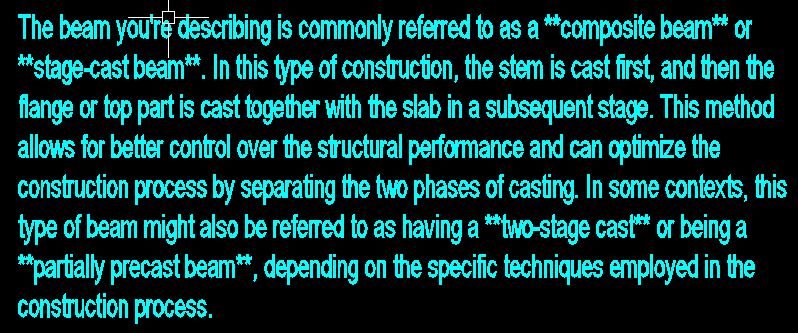Hi,
How do we call a beam where the web and bottom bars are cast first (cast-in-situ) and the top of the beam is cast at a later stage together with the slab. The beam overall height and width is 450 and 150 and the 450 is 300mm. web and flange is 150 (same thickness as the slab). The casting is done in two distinct/separate stage days or weeks apart. So far in handbooks they have singly versus double reinforced beam and rectangular and T or L shaped beam. How to intepret that beam, how to categorise it? should it be singly rectangular with the dimension of the web taken in consideration? Thanks.
How do we call a beam where the web and bottom bars are cast first (cast-in-situ) and the top of the beam is cast at a later stage together with the slab. The beam overall height and width is 450 and 150 and the 450 is 300mm. web and flange is 150 (same thickness as the slab). The casting is done in two distinct/separate stage days or weeks apart. So far in handbooks they have singly versus double reinforced beam and rectangular and T or L shaped beam. How to intepret that beam, how to categorise it? should it be singly rectangular with the dimension of the web taken in consideration? Thanks.

